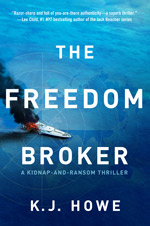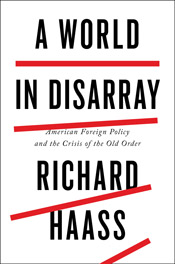As the inauguration of our new president promises to take us into unchartered territory, I pondered on how this month selection could reflect the unknown of the coming months. Per chance many books finding their way to bookstores fail to find their way to readers, and this is where a perceptive book review can help. This month selection offers a wide range of topics. We have a first timer riding side by side with worldwide spiritual celebrities, and, in between, uncanny voices of the present.
 “Freedom Broker” by K. J. Howe
“Freedom Broker” by K. J. Howe
(Quercus, pp 374, $ 26.99)
At “Books du Jour,” we pay special attention to first-timers. They are an important step to the continuity of the book business. Reviewing established authors calls for a safe stance. Taking risks on new voices entail careful scrutiny and measured endorsement. But most often than not, intuition rarely betrays. K. J. Howe is one of those safe bets. You know upon reading the first chapters of her novel, “Freedom Broker,” that you are in the presence of an enormous potential. The writing is brisk, the tone confident, and the story not only eye-popping original but also riveting. It is one of those (forgive the cliché) can’t-put-downers as you get enmeshed in the world of K&R. K&R said you? Yes, indeed, which stands for Kidnap and Rescue (though Ransom could have worked too). K &R is not an agency or an LLP, but the world revolving around a professional elite dealing with the kidnapping of hostages (estimated at 40,000 a year) and their rescue operations. Given the uncertainties around the globe, kidnapping has seen a huge increase over the last ten years and can target, not just the rich and famous, but anyone.
The hero of “Freedom Broker,” Thea Paris, the only woman kidnap negotiator in the field, is forced to live through a family tragedy, when her father, Christo, is kidnapped from his yacht off Santorini, and this while his crew get slaughtered in the assault. Thea sets to tasks to discover the who and why, investigating her father’s past and numerous enemies. But remember, when originality strikes, it does so with delightful surprises. In Howe’s novel, the kidnappers demand nothing. No ransom, no political prisoner exchange, except sending enervating Latin quotes . . . which, for Thea, initiate a perilous journey to settle long-standing family score. Be the first one to discover K. J. Howe.




